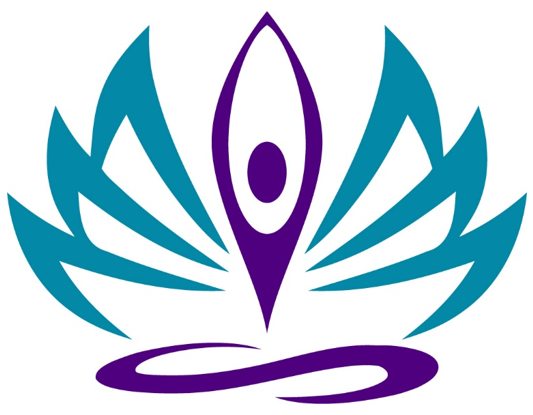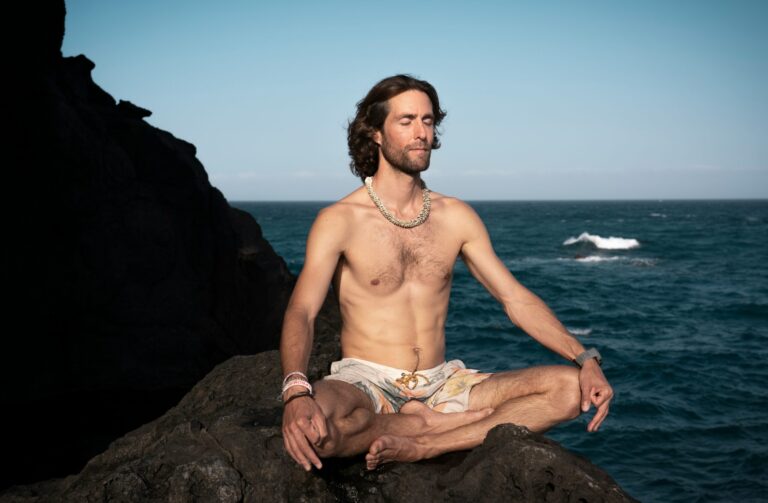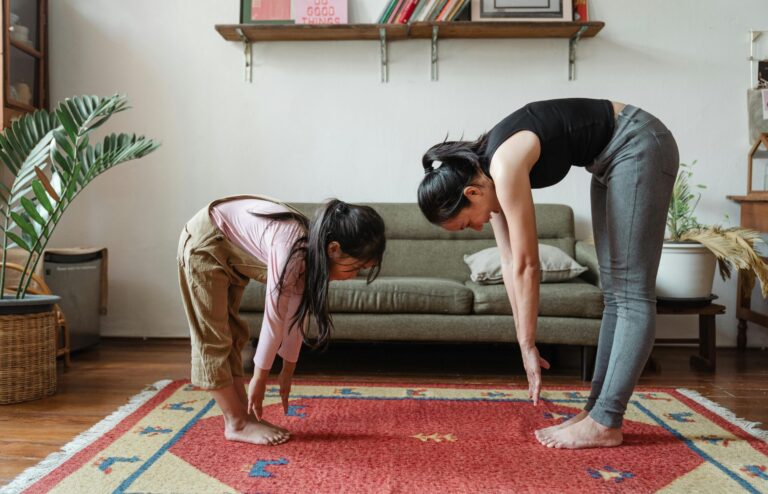Standing yoga - cultivating stability, alignment and presence
Standing yoga is far more than just a physical workout. It combines grounding with uprightness, stability with lightness and embodies in a special way the idea of being present both internally and externally. Standing postures are among the most powerful asanas in yoga - both biomechanically and energetically. They challenge us to find our balance, feel our center and consciously connect with the ground.
Why standing postures are so valuable
Standing postures activate the body's largest muscle chains, promote body awareness and improve posture and alignment. They not only train strength, but above all functional stability - the ability to find stability in movement. At the same time, they stimulate the autonomic nervous system, promote blood circulation and can help you to center yourself in stressful moments.
From a biomechanical perspective, they create the basis for a healthy posture: the conscious alignment of the feet, pelvis, chest and shoulders in standing positions has a direct effect on the body's statics and helps to reduce compensatory tension - for example in the case of asymmetries, a hollow back or shoulders that are pulled inwards. At the same time, mobility and strength can be targeted - particularly around the pelvis, in the leg axis and the shoulder girdle. Standing postures help with this:
- stabilize the leg axes (e.g. with a tendency to knock knees or bow legs).
- center the pelvis (e.g. with one-sided loading, anterior or posterior pelvic tilt).
- to straighten the spine from the base.
- stabilize the shoulder girdle in its natural position (e.g. with shoulders pulled forward or unequal shoulder height).
By consciously feeling into your feet and straightening up from there, sensory feedback (proprioception) also improves, which improves the control of muscle groups and supports emotional self-regulation through the nervous system.
Standing yoga exercises for grounding, alignment and balance
I have recorded a short, 15-minute yoga session in a standing position. Watch it directly:
If you would prefer to do the exercises in peace and quiet, you will find some of the asanas from the video below:
1. tadasana - mountain pose with conscious alignment
- Place your feet hip-width apart with the inner edges of your feet parallel.
- Shift your weight evenly onto both feet - feel the heels, balls of the big toes and balls of the little toes.
- Gently activate your thighs, lift your sternum without falling into a hollow back.
- Let your shoulders sink gently back and down and keep your neck long.
- Stay in this pose for 8-10 conscious breaths. Feel free to close your eyes and feel your feet and your grounding on the floor.
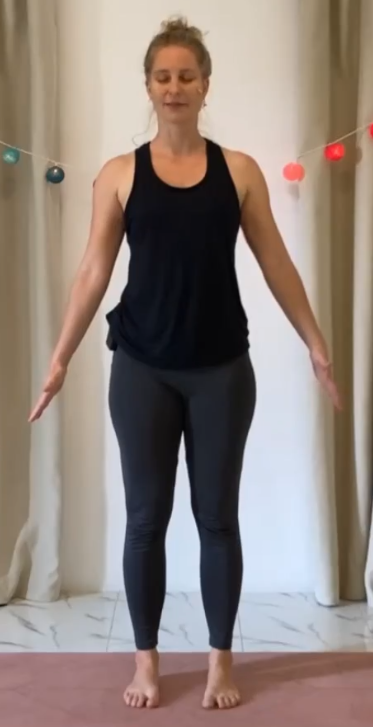
Benefit: Promotes upright posture, centering and conscious breathing. Reduces tension in the neck and activates the parasympathetic nervous system.
2. utkatasana - the powerful chair
- Gently bend your knees and push your buttocks back down as if you were going to sit on a chair.
- The knees remain behind the toes, the chest rises slightly.
- Bring slight tension into the abdomen to avoid falling into a hollow back.
- Stretch your arms upwards, keeping your shoulders relaxed.
- Remain in this posture for 5-6 conscious breaths.
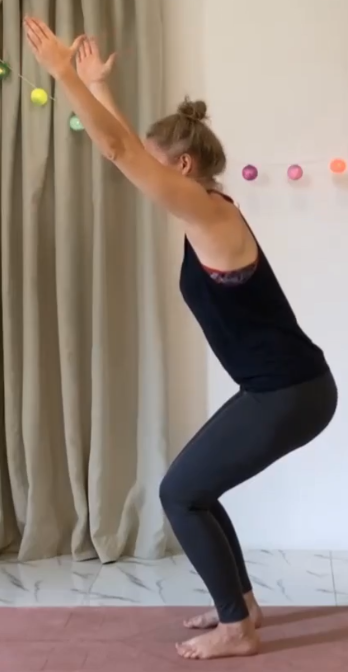
Benefit: Strengthens the legs and buttocks, promotes stability in the pelvis and activates the deep abdominal muscles. Ideal for correcting anterior pelvic alignment (hollow back).
3. virabhadrasana II - warrior 2
- Take a big lunge with your front knee over your ankle and your back leg straight. Your back foot is parallel to the narrow end of the mat, while your front foot is parallel to the long side of the mat.
- Stretch your arms out to the sides, looking over your front hand.
- Keep your pelvis neutral (do not tilt forward) and your upper body upright.
- Stay in this pose for 6-8 deep breaths, then change sides.
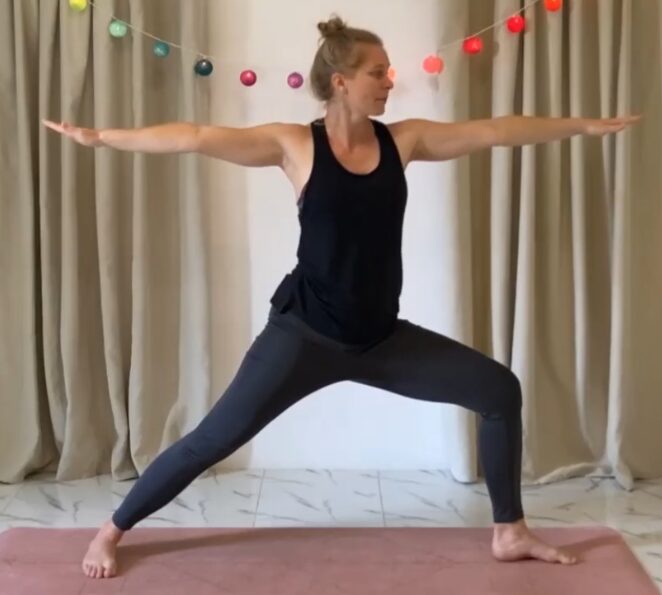
Benefit: Promotes stability, opens the chest and stabilizes the pelvis. Supports asymmetrical patterns such as the left AIC pattern, as targeted leg axis corrections can be integrated and asymmetrical exercises can also be practiced by varying the number of repetitions, e.g. more often on the right than on the left in the case of a left AIC pattern.
4. trikonasana - triangle pose
- Stretch both legs, widen your stride and stretch your arms to shoulder height.
- Tilt your pelvis to one side and pull your upper body and arm as far as you can to that side.
- Then grab your upper or lower leg with your front hand and roll your shoulder back.
- The upper arm points to the ceiling, the shoulder is rolled back.
- The view is upwards or straight ahead.
- Stay in this position for 6-8 breaths, then change sides.
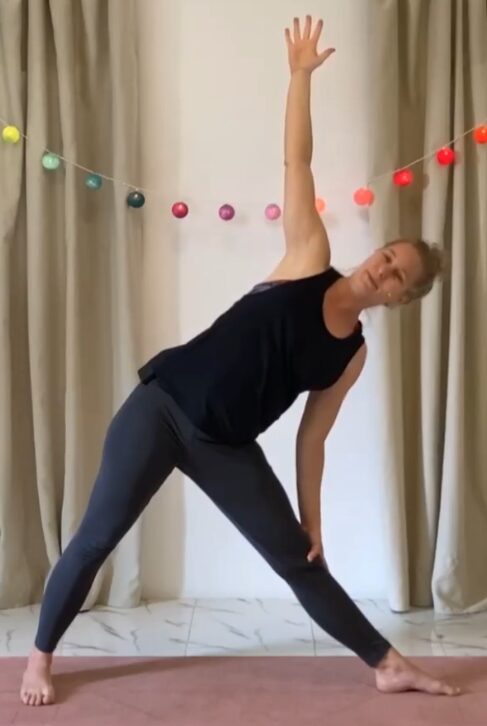
Benefit: Promotes lateral stretching of the flanks, supports the ability to rotate in the upper body and trains the stabilizing muscles of the trunk. Particularly helpful for rib restrictions and asymmetrical breathing movements.
5. wide-legged forward bend
- Bring your feet at least mat-width apart, your legs are stretched.
- Bring your hands to your hips and then slowly bend forward, leading from your chest.
- You can either keep your hands on your hips or bring them towards the floor and between your feet.
- Remain in this position for 6-8 deep breaths.

Benefit: This posture relieves tension in the shoulder and neck area, stretches the entire back and promotes deep relaxation as well as a feeling of calm and grounding.
Conclusion
Yoga im Stehen verbindet dich mit deiner inneren Kraft und äußeren Stabilität. Die bewusste Ausrichtung in diesen Haltungen kann tiefgreifende Veränderungen im Körperbewusstsein, in der Atmung und in der emotionalen Präsenz bewirken. Stehhaltungen sind eine wunderbare Möglichkeit, funktionelle Haltungsmuster auszugleichen, das Nervensystem zu regulieren und im wahrsten Sinne des Wortes wieder „fest im Leben zu stehen“. Egal, ob du Yoga für mehr Beweglichkeit, emotionale Balance oder als körperliches Training nutzt – stehende Asanas dürfen in deiner Praxis nicht fehlen.
